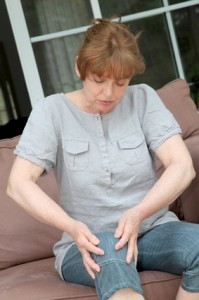 If you or someone you love is suffering from knee osteoarthritis, there are treatment options that do not involve surgery. Read this post to find out more about the top 10 ways to treat knee osteoarthritis without undergoing surgery.
If you or someone you love is suffering from knee osteoarthritis, there are treatment options that do not involve surgery. Read this post to find out more about the top 10 ways to treat knee osteoarthritis without undergoing surgery.
1. Exercises. Engage in activities that are specific for knee arthritis like water aerobics, floor exercises, yoga and weight lifting.
2. Supplements. Consider supplements that include glucosamine with chrondrotin 1500 mg per day. Make sure you are not allergic to shellfish. Check the label some glucosamine has shellfish in the supplement. Fish oil is an Omega 3 and it is good for joint health. It should be taken at least 1000 mg per day.
3. Oral NSAIDs: over the counter vs. prescription. Check with your orthopaedic physician to see if you are a candidate for oral NSAIDs. Over the counter Aspirin or Tylenol (acetaminophen) is also an option.
4. Hyaluronic acid (HA) injections. The normal knee has hyaluronic acid that has a thick and viscous consistency. The composition of the HA changes in the arthritic knee. Hyaluronic acid injections replace a fluid similar to the healthy fluid found in a normal knee without arthritis. There are many brands on the market. They can be given as a single dose injection or a series of injections ranging from three to five depending on the brand. Examples of the different brands are: hyalgan, orthovisc, synvisc, supartz, and euflexa.
5. Cortisone injection. Cortisone is similar to a strong Motrin or Aleve in the sense that it is able to slow down or reduce the inflammatory process that is produced by knee osteoarthritis. Cortisone injections can be given every three months. If given more than every three months it does not work as well. Cortisone does not destroy the knee joint, the bones in the knee, or the knee ligaments or tendons. There are a lot of myths about cortisone. The bottom line is that cortisone will not damage an arthritic knee joint. Cortisone given in the knee joint does not cause the person to gain weight. Cortisone may temporarily raise a person’s blood sugar if they are a diabetic.
6. Unloader knee braces. An unloader knee brace is a special brace that is used for patients that have knee pain with activity. The concept behind the unloader knee brace is that it forces the person to put more weight on the non arthritic side of the knee. Most people with arthritis have one side that is less affected by the arthritis and cartilage loss. Some of the different brands of the unloader knee braces are: Berg and Donjoy. They can be ordered through your orthopaedic physician. The arthritic leg must be measured so the unloader knee brace fits properly and then the braces are built to fit each individual knee. Most insurance plans will cover the brace.
7. PRP or Platelet Rich Plasma. There are enzymes in PRP that may help reduce the progression of osteoarthritis in the knee and minimize painful and uncomfortable symptoms. PRP is produced by withdrawing blood from the person and separating out the highly concentrated plasma and injecting it into the arthritic knee joint.
8. Weight loss. Less weight on the arthritic knee typically helps to reduce the pain from the osteoarthritis and may slow down the progression of the condition. Morbidly obese patients have a higher incidence of knee arthritis at a younger age.
9. Capsaicin. Capsaicin is a topical cream made out of red peppers that can help reduce the pain of knee arthritis. It can be purchased over the counter at most grocery or drug stores including places like Walgreens, Kroger, Costco or Walmart.
10. Simple slip on knee brace. An over the counter knee brace that slips over the knee made of neoprene with Velcro straps can be helpful to people experiencing osteoarthritis. The knee brace can help give a sense of more support to the knee and it provides warmth to the knee which may help lessen arthritic pain.

Leave a Reply
You must be logged in to post a comment.